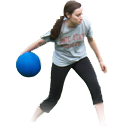
The Art of Making Goals That Stick (Any Time of Year)

Roughly a month into the new year and statistics say most resolutions are long forgotten. Most of us set goals heading into the new year with aspirations to accomplish greatness when it comes to health, weight and performance. Yet, these goals tend to quickly slip out of mind as the days go by.
This common phenomenon doesn’t happen because the goals weren’t important or meaningful, but most likely because of their vagueness. Goals like “This year, I’m going to lose weight,” or “I will start eating better,” sound all too familiar, yet they don’t set you up for success. Making your goals SMART is key to successful follow-through, progress and achievement.
SMART is an acronym for:
- Specific
- Measurable
- Achievable
- Relevant
- Timely
The more specific you make your goal, the easier it is to define its success. Measuring your goal refers to having a clearly defined method in place to check progress and success. Measurable aspects can include serving sizes, paces, pounds, distances, etc. While goals shouldn’t necessarily be easy to achieve, they should be achievable with a reasonable effort. For example, if you haven’t yet run a 5K, a marathon might not be an achievable goal at this point. Relevant goals speak to the purpose, reason and why attached to the goal. Finally, the goal needs to have a time limit, and it does not have to be a full year. Attaching a timeline allows you to stay invested and check in on progress before the goal totally gets away from you.
A simple way to look at this is to add a ‘by ’ statement to the end of your original goal. For example, I will improve leg strength by increasing my squat weight and box jump reps each month or I will eat a higher quality diet by including at least two servings of fresh vegetables a day.
Setting goals in this manner creates a concrete statement of the desired outcome with an action plan that helps guide your intentions toward said outcome.
Who says we can’t clear the slate on February 5 with a new set of SMART goals? Here are some examples showing how to apply the SMART theory to a goal:
STARTING GOAL: SET A MARATHON PR
Challenge: This is an outcome-based goal that requires a large amount of work to be successful, which isn’t defined in the goal. It also lacks a timeline, which is crucial for a big goal like this.
Fixed SMART Goal: I will target a marathon personal record of under 3 hours 15 minutes at the Chicago Marathon in October by following my training plan that focuses on weekly speed sessions.
STARTING GOAL: TO EAT BETTER
Challenge: The term ‘better’ is very subjective and lacks definition and purpose, and it cannot be measured in its progress or achievement.
Fixed SMART Goal: I will reduce my risk of Type 2 diabetes by eating three meals a day that focus on whole-food ingredients and consume 30 grams of fiber daily.
STARTING GOAL: I WANT A LEANER BODY
Challenge: This goal is vague and provides no structure on the how, why and when of accomplishing such a feat. The term ‘leaner’ is not well defined in its achievability or measurability.
Fixed SMART Goal: To be more confident in my body, I will go from 18% body fat to 16% body fat by committing to three strength workouts a week, four cardio workouts a week, logging meals on MyFitnessPal and working with a sports dietitian to get my nutrition on track.
STARTING GOAL: USE MY GYM MEMBERSHIP
Challenge: Great! But … again, this goal focuses on a vague endpoint without anything specifically defined, measurable or time-related.
Fixed SMART Goal: I will invest in myself and improve my strength and cardiovascular fitness by taking twice a week spin classes and attending weekly persona trainer sessions at my gym.
BEYOND THE SMART GOAL
If making your goal SMART leads you to feel overwhelmed, there are a few other ways to make your resolutions reality:
- Try making micro goals. Many people find breaking long-term goals into smaller, bite-sized goals provides a series of successes to step up progress toward your big goal over time.
- Share your intentions. Telling friends, family and social strangers your intentions helps keep you honest and on track.
- Write it down. Putting those goals in pen or a sticky note on your desktop helps mentally solidify the desire.
- Consult an expert. There’s a reason we haven’t yet achieved these goals: They are hard! So don’t put all the pressure on yourself, and schedule an appointment with a personal trainer, dietitian, therapist, physician or other expert related to your desired outcome.
In the end, making a goal is better than not making a goal at all, and striving to make smarter ones helps you actually achieve them. Remember: You don’t have to wait for a new calendar year to get started.




